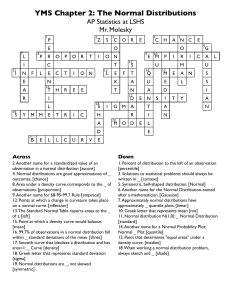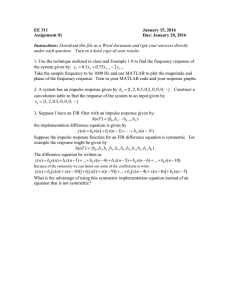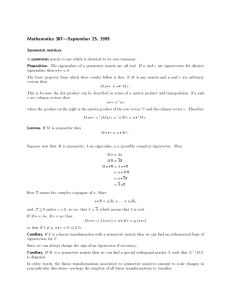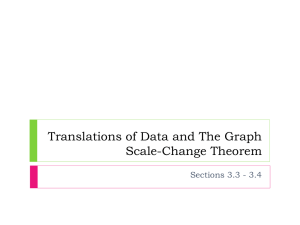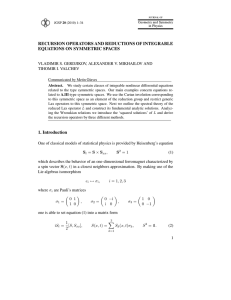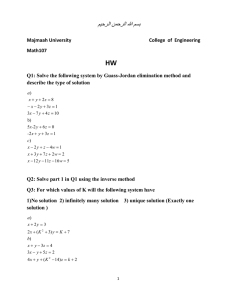Class Exercise on Probability Analysis in PERT
advertisement
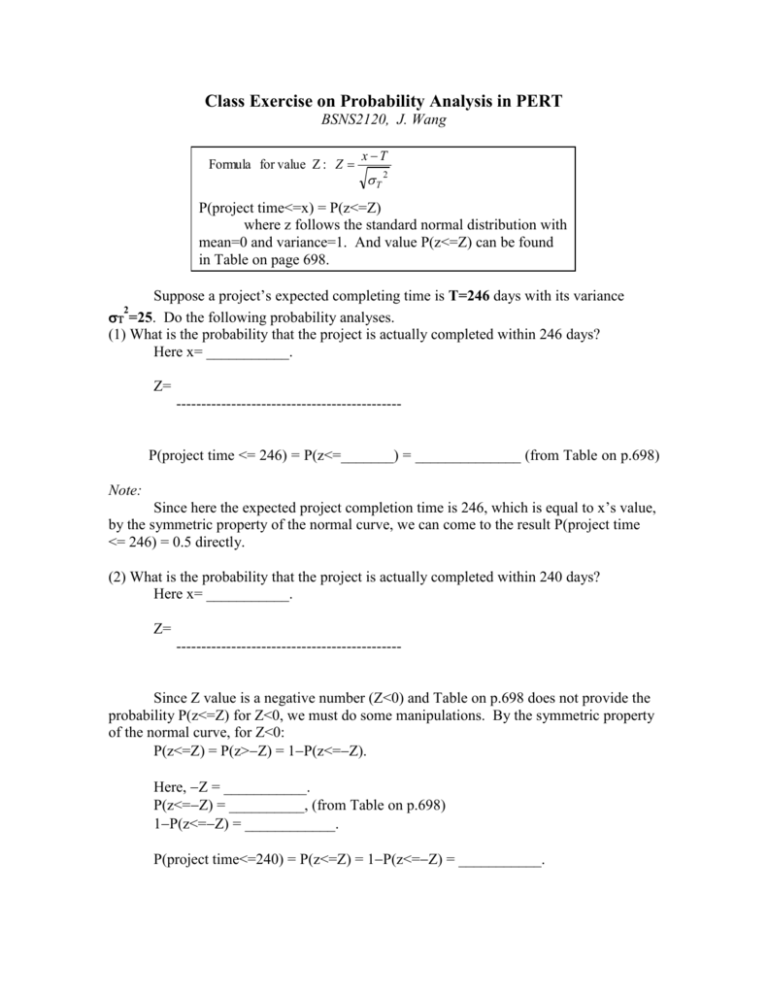
Class Exercise on Probability Analysis in PERT BSNS2120, J. Wang Formula for value Z : Z x T T 2 P(project time<=x) = P(z<=Z) where z follows the standard normal distribution with mean=0 and variance=1. And value P(z<=Z) can be found in Table on page 698. Suppose a project’s expected completing time is T=246 days with its variance Do the following probability analyses. (1) What is the probability that the project is actually completed within 246 days? Here x= ___________. 2 =25. Z= --------------------------------------------- P(project time <= 246) = P(z<=_______) = ______________ (from Table on p.698) Note: Since here the expected project completion time is 246, which is equal to x’s value, by the symmetric property of the normal curve, we can come to the result P(project time <= 246) = 0.5 directly. (2) What is the probability that the project is actually completed within 240 days? Here x= ___________. Z= --------------------------------------------- Since Z value is a negative number (Z<0) and Table on p.698 does not provide the probability P(z<=Z) for Z<0, we must do some manipulations. By the symmetric property of the normal curve, for Z<0: P(z<=Z) = P(z>Z) = 1P(z<=Z). Here, Z = ___________. P(z<=Z) = __________, (from Table on p.698) 1P(z<=Z) = ____________. P(project time<=240) = P(z<=Z) = 1P(z<=Z) = ___________. (3) What is the probability that the project is actually completed within 256 days? Here x= ___________. Z= --------------------------------------------P(project time <= 246) = P(z<=_______) = ______________ (from Table on p.698) (4) What is the probability that the project is NOT yet finished by the 256th day? Here x= ___________. Z= --------------------------------------------P(project time > 256) = P(z>Z) But Table on p.698 only provides P(z<=Z). By the symmetric property of the normal curve: P(z>Z) = 1P(z<=Z). P(z<=Z) = _____________ (from Table p.698). 1P(z<=Z) = _____________. P(project time > 256) = P(z>Z) = 1P(z<=Z) = _____________.


